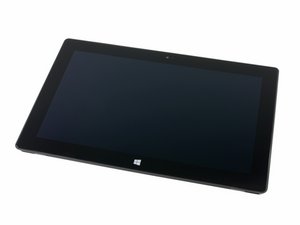The battery ZIF? That's usually the one that goes. At least 3 questions on here in the last couple years about it...
In any case, for any ZIF socket, yes, it's possible to replace it. It's not particularly easy though. These are the steps I use:
1. Closely examine the ZIF socket. How is it broken? Is it possible to repair it? In 80% or more of cases, it is, and it's the easiest/fastest option. All the socket does is these 2 things: Hold the ribbon in correct alignment with the pins and keep it there. The alignment issue is fairly straight forward as long as it least one of the sides of the ZIF is in tact and the pins are OK or repairable. Keeping it there is also not necessarily that hard. If the latch is your only problem then using a good quality double sided tape (eg. red tape) will work in 99% of cases. If there's nothing holding the cable to the board (ie. the top is bad) then you need to make something that will press it down. I've used bent scrap metal and, again, good quality tape. I've also used solder to hold bent metal frames on. And in some cases, if the pins are OK and it's a device that's not likely to be repaired again for some time, I even solder the ribbon directly to the pins.
2. If it's not usable, see if you can find any identifying marks. And take careful measurements. A cheap digital caliper will be accurate enough for this purpose. Use metric (mm) as that's what they're usually spec'd with. 99% of the time manufacturers use standard parts that you can get from digikey, mouser, or newark. The problem is identifying which one. You need to know size, # pins, pin spacing (pro tip - use the cable to get this info), etc. Once you find it order the part. In fact, order at least 3 as even experienced solderers make mistakes.
3. To desolder the connector hot air is usually best unless you have a desoldering station. You don't need expensive dies for this - use tinfoil to make a shield that will just fit around the connector and it's solder joints and that will allow you to blow hot air in there but keep it away from the other components. If you have kapton tape or aluminum foil tape (like for ductwork) you can use that to tape your foil down to the board around the component. Lead-free solder melts at, at most, around 250C. Start lower than that and work your way up till you hit the minimum temperature to allow the component to come free. Use tweezers or similar to remove it.
4. To solder the new connector on you can use hot air but an iron and good solder paste is usually the best option. I use tips with pre-built solder well for this. Put on the paste with a needle, clean the well, whip the iron across the pins and excess solder will sit in the well.
Obviously it's not an easy repair. But it's doable. And what have you got to lose? You'll learn a new skill and might find you have an aptitude for this work.
Был ли этот ответ полезен?
Проголосовали
Отменить
Оценка
7
Отмена
Scroll through this thread to find the appropriate place for this comment. Then, click "Attach comment to this post" to move it.


 3
3  2
2  4
4
1 Комментарий
I found a replacement part on Newark. I haven't tried it yet, but it looks pretty darn close to the broken part. I don't know what it looked like before being broken though. Mfr# AYF532835, Sku 46T5852, on Newark. A Panasonic part. I measured everything and like I said it looks perfect compared to my broken one.
из Elizabeth Baker